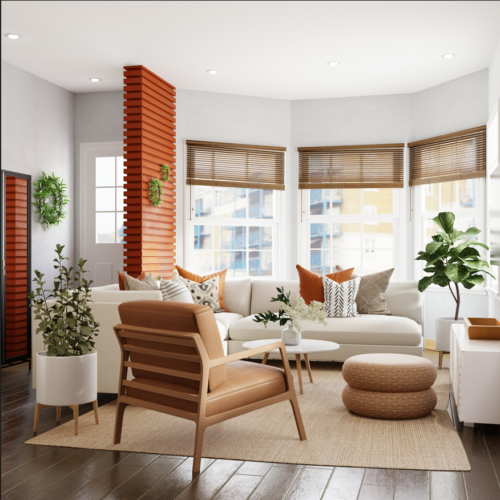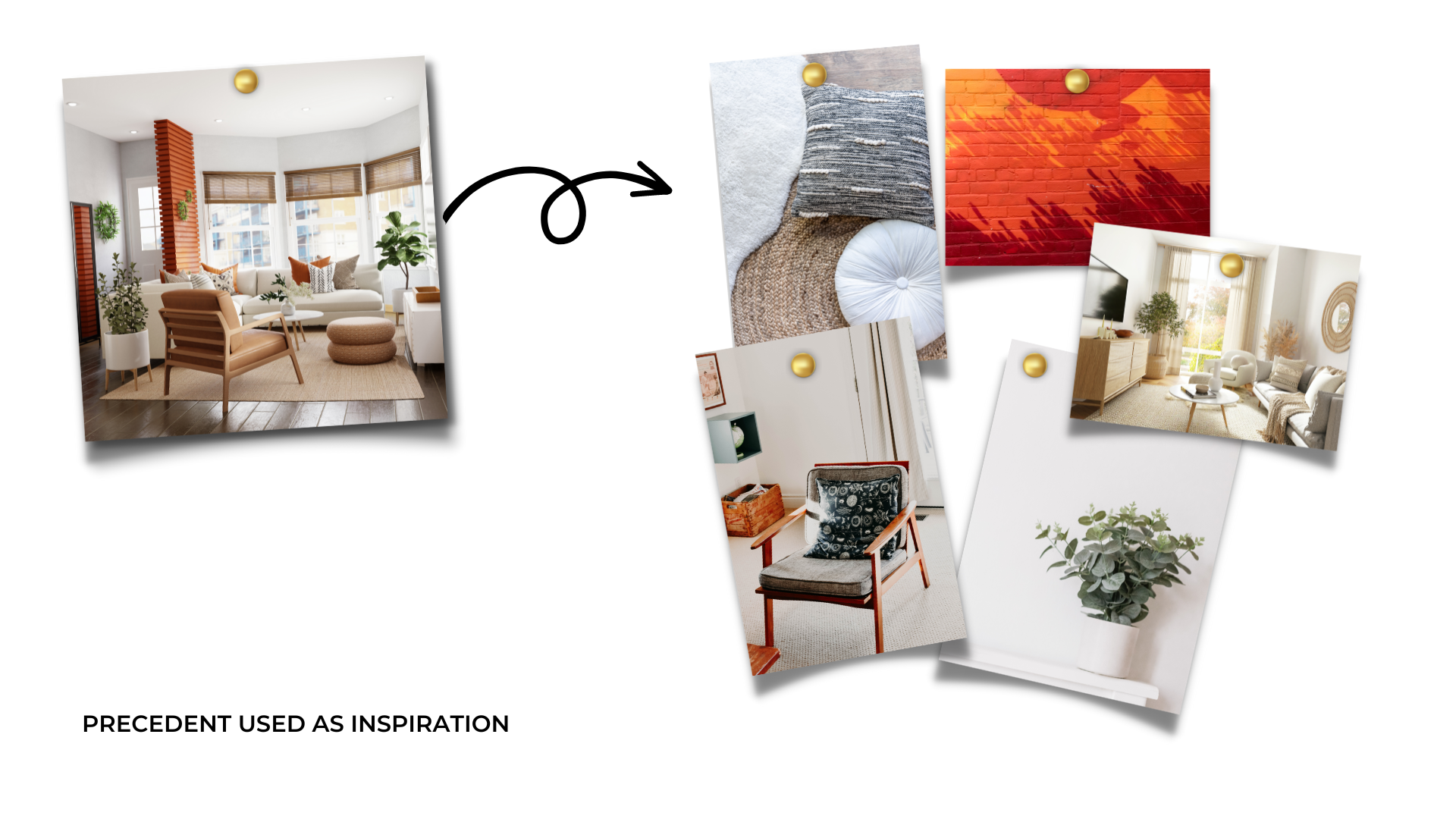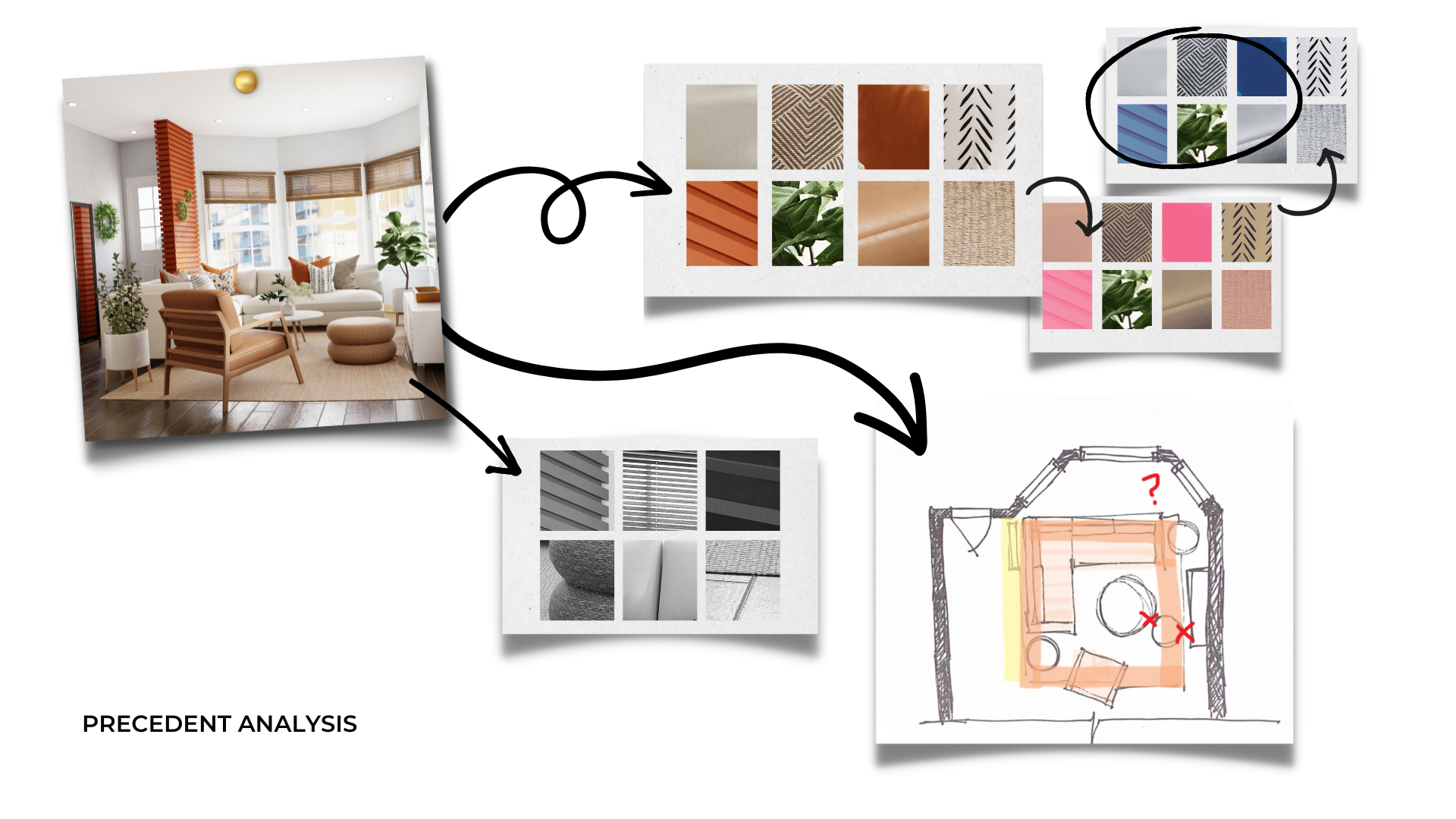
Inspiration vs Precedent Analysis
A big part of any spatial design study will be researching the designs that have come before. This could be as far-reaching as researching classical architecture or as close to home as exploring a new space that just opened around the corner.
Observing and learning from the work of others is an essential part of being a conscientious designer.
Even when you don’t mean to, you’re relying on the work of your predecessors when it comes to spatial design.
- How do we know what a good size for a door is?
- How do we know what a good proportion for steps and stairs is?
- Why are we surrounded by mid-century looking furniture?
- When I say ‘a place to sit’ in your home, why are we all likely looking at relatively similar chairs, benches, sofas, etc.?
Ultimately, the prior work of others both
- serves as inspiration and
- acts as a teacher when it comes to key design lessons.
That first category is probably what we’re all most familiar with. Flipping through magazines? Scrolling through Instagram or Pinterest? Finding images that really strike a chord with us? We all do this, both those who work in interiors professionally and those that are just a fan of interior design. The inspiration that others’ work can provide is really helpful!
Importantly, however, there is the valuable and important opportunity to dive deeper. Why?
There are some risks to working just with others as inspiration alone.
- Are you just mimicking the inspiration?
- Is the inspiration a truly best fit for the needs of your own project or space?
- Are you limiting your own creativity by just looking at others as inspiration?
What’s the alternative?
When you start the BA (Hons) in Interior Design at OCA, one of the terms you’ll come across is precedent analysis.
It’s a big part of the design process, but a common misunderstanding is that looking at precedents is looking at inspiration. This isn’t the case. Instead, precedent analysis falls in that second category that we talked about earlier, where the work of others becomes a teacher when it comes to key design lessons.
So what does the word precedent mean?
Precedent is a noun that borrows from the word precede – meaning coming before. In spatial design, a precedent is just any existing space. It could be a space that’s been designed by one of the most famous designers in the world, or it could be an interesting little nook you noticed on a walk that’s caught your eye.
Analysing precedents is when we look at this existing space in detail. You’re not just looking at a picture or taking 5 minutes to walk around and taking it in as inspiration. Instead you’re looking at the space in detail.
A few weeks ago we had a group workshop where we went through a more systematised way of looking at precedents. (Students can find a summary Padlet of the session here).
There are definitely different ways you can conduct good analysis of precedent projects, including close readings of text from the designers, collages, annotated drawings, etc.
Ultimately, though it’s all about diving in a lot deeper than what you notice in that first glance – that’s just looking at it for inspiration. Instead you’re figuring out what the spatial design is achieving and how it’s achieving it while also identifying some areas where it’s struggling and why.
So let’s compare what taking looking at a previous work as inspiration looks like versus looking at a previous work to conduct precedent analysis looks like.

So here, there’s an image of a living room type space. If we’re looking at this image purely for inspiration, we can see the following at a glance:
- Simple palette of white, orange, and neutrals
- Some rougher natural textures
- Orange is the key accent
- White sectional sofa and mid-century modern style chair
But this is a really surface-level look, and means any design is going to feel really similar to the original if taken as inspiration, which may or may not be the best thing for the project.

If the precedent was analysed instead, it becomes a deeper dive. What might this look like?
- Here we can look at the palette of colours and materials first.
- Upon analysis instead of just noticing orange, white and neutrals, we can look at it as a composition. There’s a balance being struck here. Like 20% vivid colour, 40% textured neutrals, and 40% soft, smooth, nearly white tones.
- This means, we look at the precedent not for just a like-for-like inspiration but as a lesson on how the same balance of colour, texture, and neutrals can be achieved – even if it’s not the exact same colours, neutrals, or textures.
- Here we can also look at some design principles at play.
- Upon analysis we notice a lot of horizontal, linear items being repeated in the space as well as some more softer, solid, rounded forms. This gives us another idea of how to achieve a similar feel by striking a comparable balance. Mixing something more structured and linear with something more organic and soft could help us achieve the same feel, without needing to use the same exact elements as the precedent.
- Here we can also be a bit more critical and look at the space planning being utilised.
- In this case, it might be that the space division taking place between the door and living space is working well. It might not have to be this bespoke orange, horizontal slatted partial wall, but it could be another strategy being used to achieve this same division.
- It might also be good to note how the use of the rug is working well to pull the furnishings together to make the living space area feel like it’s own space within this room that also has to work as the entry to the space and open up onto other spaces in the home.
- But it also is helpful to note that the sectional sofa leaves an awkward empty space behind it in front of the window, and the sculptural little footstool actually causes some traffic flow issues meaning it’s not that easy to walk around it and the coffee table to actually go and sit on the sofa. So in this regard, the precedent is offering a lesson on how this particular layout doesn’t work as well as it could or should in a space with these features and proportions.
So let’s compare.
A precedent project treated just as inspiration gives us some really surface-level ideas and ends up mimicking the original more than anything.
A precedent that’s fully analysed actually gives us some more fundamental lessons to apply in different ways – these lessons become applicable to both the project at hand and for future projects that might have similar requirements or considerations.
It’s for that reason, it’s so important to conduct full analysis rather than just find inspiration images.
Go beyond the inspiration, learn those lessons, and apply them while keeping your own creativity, originality, and individuality at the forefront. You’ll likely surprise yourself, and come up with something different, that works better, feels better, and even looks better than the original precedent.
Images used in the analysis:
Photos by Spacejoy, Julien Lanoy, Tools For Motivation, Jacalyn Beales, Sincerely Media on Unsplash.com
|
|






